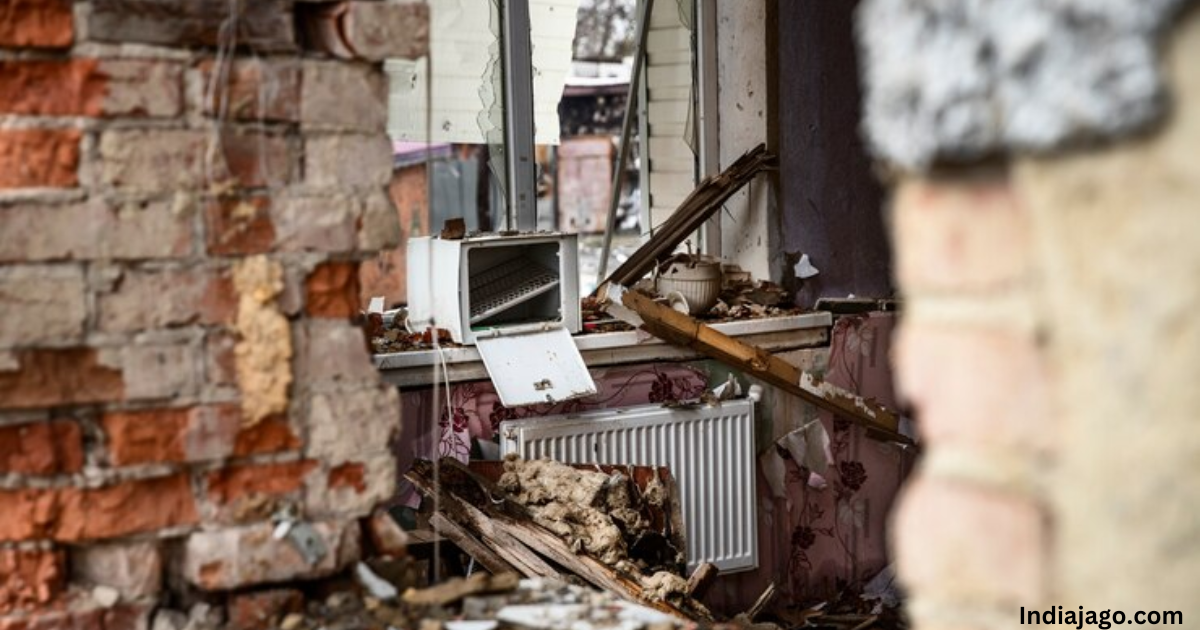Introduction
Earthquake Insurance for Homes, The unpredictable nature of earthquakes adds an element of uncertainty to the safety of our homes. In the aftermath of such seismic events, the damage incurred can be overwhelming. Earthquake insurance for homes emerges as a crucial shield, offering financial protection and a sense of security for homeowners. This in-depth guide aims to navigate the complex landscape of earthquake insurance, exploring its significance, coverage intricacies, associated costs, and key considerations for those seeking this specialized form of assurance.

Deciphering Earthquake Risk
Earthquakes, stemming from the intricate movements of tectonic plates beneath the Earth’s surface, pose a significant threat to homes and structures. The intensity of these geological events, measured on the Richter scale, varies, with regions near fault lines being particularly susceptible. The Pacific Ring of Fire, encompassing areas like Japan, Indonesia, and the western coasts of North and South America, is renowned for heightened seismic activity.
While California, situated along the San Andreas Fault, is a hotspot for earthquakes in the United States, seismic events can occur unexpectedly in other regions. This underscores the importance of earthquake insurance for homeowners nationwide.
The Crucial Role of Earthquake Insurance
Standard homeowners insurance policies, while providing coverage for fire, theft, and other perils, often fall short when it comes to earthquake damage. The exclusion of earthquake coverage leaves homeowners vulnerable to significant financial losses. Earthquake insurance steps in as an essential safeguard, protecting the investment in one’s home and its contents.
-
Coverage Varieties
a. Dwelling Protection Earthquake insurance typically encompasses coverage for the structural elements of a home, including the foundation, walls, roof, and attached structures. This coverage facilitates the repair or reconstruction of the home in the aftermath of earthquake-induced damage.
b. Personal Belongings Safeguard In addition to the structure, earthquake insurance may extend coverage to personal belongings adversely affected during an earthquake. This includes furniture, electronics, clothing, and other valuable items.
c. Assistance with Additional Living Expenses (ALE) ALE coverage proves invaluable by assisting with the costs associated with temporary living arrangements in case the home becomes uninhabitable due to earthquake damage. This includes expenses for hotels, meals, and other necessary accommodations.
d. Retrofitting Support Some policies go a step further, offering coverage for retrofitting measures designed to fortify a home against earthquakes. This may involve reinforcing the structure and securing heavy furniture to minimize potential damage.
-
Establishing Coverage Limits
When procuring earthquake insurance, homeowners need to meticulously assess their coverage requirements. Factors such as the home’s replacement cost, the value of personal belongings, and potential additional living expenses must be taken into account. Collaborating with an insurance agent ensures that coverage limits are set at levels that guarantee comprehensive protection in the event of an earthquake.
The Price Tag of Earthquake Insurance
The cost of earthquake insurance is influenced by various factors:
- Geographic Location Homes located in high-risk seismic zones typically attract higher premiums due to the increased likelihood of earthquake-induced damage.
- Construction Material The materials used in constructing a home can impact insurance costs. Structures built with earthquake-resistant materials may qualify for lower premiums.
- Age of the Home Older homes may be more susceptible to earthquake damage, leading to potentially higher insurance premiums.
- Deductible Dynamics Earthquake insurance often comes with higher deductibles compared to standard homeowners insurance. Homeowners must carefully consider the deductible amount and its implications on out-of-pocket expenses in the event of a claim.
- Retrofitting Investments Homes that have undergone earthquake retrofitting measures may be eligible for premium discounts. Investing in retrofitting not only enhances safety but can also result in long-term cost savings.
Key Considerations in Earthquake Insurance Selection
- Risk Assessment Homeowners should delve into the seismic risk specific to their region, considering the potential for earthquake damage. Understanding local geological conditions and historical seismic activity is pivotal in making informed decisions about coverage.
- Diligent Deductible Evaluation The deductible amount represents the homeowner’s out-of-pocket expense before insurance coverage kicks in. While opting for higher deductibles may reduce premiums, finding the right balance aligning with financial capacity in the event of a claim is crucial.
- Thorough Coverage Limit Review A meticulous review of coverage limits ensures that both the structure and contents of a home are adequately protected. Underestimating coverage needs can lead to financial strain in the event of substantial damages.
- Embracing Retrofitting Opportunities Exploring retrofitting measures not only enhances a home’s safety but can also translate into insurance premium discounts. Homeowners should consider retrofitting options and engage in discussions with their insurance providers.
- Policy Comparison Different insurance providers offer varied earthquake insurance policies with diverse coverage options and costs. Obtaining quotes from multiple providers, considering both coverage and premium costs, is essential in making an informed decision.
Conclusion
Earthquake insurance for homes emerges as a tailored defense mechanism, offering a safety net against the financial repercussions of seismic events. Navigating the intricacies of earthquake insurance, from understanding risks and coverage options to evaluating costs and making informed decisions, empowers homeowners to secure their homes effectively. In the face of the unpredictable nature of earthquakes, having the right insurance in place not only provides peace of mind but also ensures financial security when it matters most.
